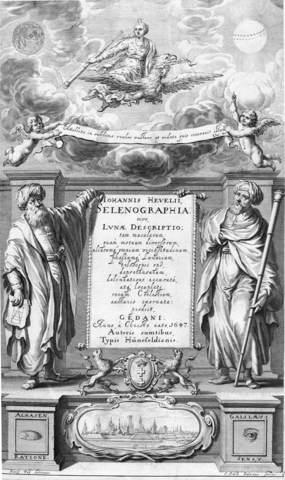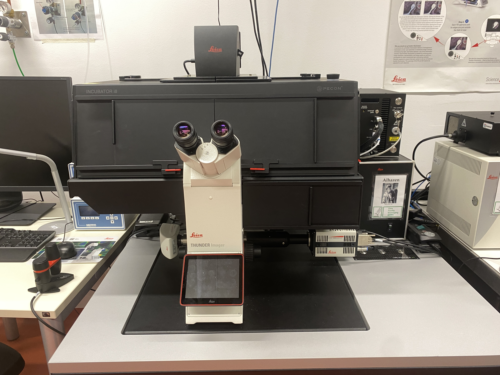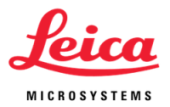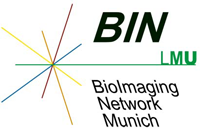Alhazen: TIRF and inverted fluorescence microscope
 Named after Alhazen, the Latinized name of Abu Ali al-Hasan ibn al-Haitham, an Arab scientist around the year 1000 who described refraction and is considered the inventor of the magnifying glass (Wikipedia de|en). His "Book of Optics", written in Arab in 1021 was translated to Latin at the end of the 12th century. A Latin version was printed in 1572, more than half a millenium after the original publication. The book is noted for its early use of the scientific method. In 1647 he was depicted together with Galileo Galilei on the front page of "Selenographia" (see picture), an astronomy book by Johannes Hevelius.
Named after Alhazen, the Latinized name of Abu Ali al-Hasan ibn al-Haitham, an Arab scientist around the year 1000 who described refraction and is considered the inventor of the magnifying glass (Wikipedia de|en). His "Book of Optics", written in Arab in 1021 was translated to Latin at the end of the 12th century. A Latin version was printed in 1572, more than half a millenium after the original publication. The book is noted for its early use of the scientific method. In 1647 he was depicted together with Galileo Galilei on the front page of "Selenographia" (see picture), an astronomy book by Johannes Hevelius.
“If learning the truth is the scientist’s goal… then he must make himself the enemy of all that he reads.”
Alhazen
Manufacturer's microscope designation: Leica THUNDER Imager 3D Live Cell TIRF.
Summary
This is an inverted, motorized (x, y, z) fluorescence microscope built around a DMi8 stand. It has 488 nm excitation for TIRF and LED excitation for normal fluorescence. Live cell imaging with a stage top incubator. Motorized stage allows time-laps recording of several positions in parallel. Or tile scans of large areas. LED fluorescence excitation is fast switchable and avoids damaging UV light that is a problem using Mercury based lamps. Adaptive Focus Control (AFC) hardware allows long-term recording without loosing the focus. THUNDER software allows computational clearing/deconvolution of image data. The TIRF module also allows "HiLo" illumination, where the TIRF laser is sent as a light sheet at a low angle through the sample. The additional color camera allows recording of classical histological stainings.

Optics
Condenser with N.A. 0.55.
Phase contrast for 5x and 10x objectives.
Objectives
- N PLAN 5x/0.12 PH0 11506303
- HC PL FLUOTAR 10x/0.32 PH1 11506522
- HC PL APO 20x/0.80 11506529
- HC PL APO 40x/0.95 CORR 11506414. Correction collar for coverslip thickness 0.11 - 0.23 mm
- HC PL APO 63x/1.40-0.60 OIL; WD 0,14 11506349
- HC PL APO 100x/1.47 oil CORR TIRF. For TIRF applications. WD 0.09 mm. Correction collar for coverslip thickness 0.10 - 0.22 mm or for 21°C - 37°C
Light sources
For conventional fluorescence, the light source is a so-called "LED5" which has four excitation ranges, around 395, 475, 555, and 635 nm. This LED light source can switch fast between the channels, a property useful in combination with the multi-bandpass filter. It allows multi-color recordings at very fast frame rates without the need to move filter cubes. A fast moving excitation filter wheel minimizes bleed through between channels.
For TIRF excitation a 488 nm laser with 50 mW output is available.
Filters
Two filter cubes are available. One is optimized for GFP, to maximize light collection and minimize crosstalk. The other one is a quadband filter described in the following table.
| Emission color | Excitation | Dichroic | Emission | Corresponding filter wheel BP |
| blue | 391/32 | 415 | 435/30 | 440/40 |
| green | 479/33 | 500 | 519/25 | 510/40 |
| orange | 554/24 | 572 | 594/32 | 590/50 |
| far red | 638/31 | 660 | 695/58 | 700/75 |
| 100% Transmission |
A number in the form 510/40 indicates a bandpass filter with the central wavelength (510 nm) and the spectral width of the window (40 nm). In this example, the filter thus opens at 490 nm and closes at 530 nm.
Cameras
B/w camera for fluorescence
Leica sCMOS Camera DFC9000 GT. 2048 x 2048 pixels. Chip pixel size 6.5 µm.
Color Camera for bright field
Leica DFC450 CCD camera with 2560x1920 pixel (5 Mpixels). Live image with 1280x960 pixels at 18 frames per second.







